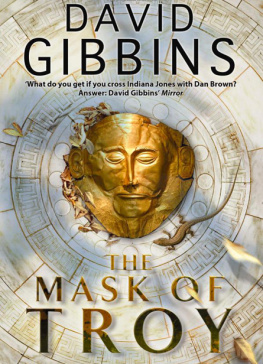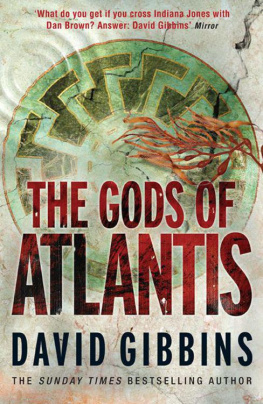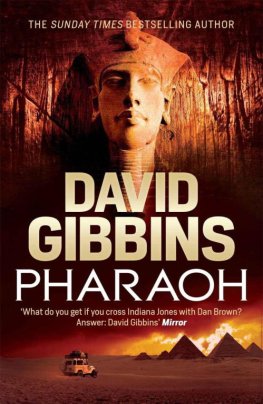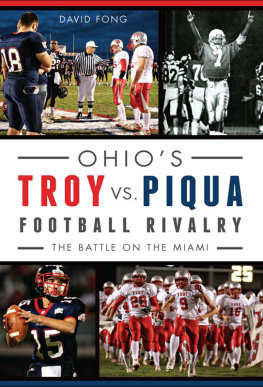Acknowledgements
I am most grateful to my editors, Martin Fletcher at Headline and Caitlin Alexander at Bantam Dell; to my agent, Luigi Bonomi of LBA; to Gaia Banks, Alison Bonomi, Darragh Deering, Sarah Douglas, Sam Edenborough, Mary Esdaile, Harriet Evans, Kristin Fassler, Emily Furniss, Tessa Girvan, David Grogan, Jenny Karat, Celine Kelly, Nicki Kennedy, Kerr Macrae, Alison Masciovecchio, Tony McGrath, Jane Morpeth, Peter Newsom, Amanda Preston, Jenny Robson, Jane Selley, Rebecca Shapiro, Jo Stansall, Nita Taublib, Adja Vucicevic, Katherine West, Leah Woodburn and Theresa Zoro; to the Hachette representatives internationally; and to my many other publishers around the world.
I owe special thanks to Oya Alpar and my Turkish publishers, Altin Kitaplar, for inviting me to the excellent Istanbul Book Fair, which led me to return for several inspirational days to Troy while I was writing this novel. Im grateful to my brother Alan for joining me on that trip and for his photography, as well as for his work on my website www.davidgibbins.com. I first visited Troy and Mycenae in the early 1980s with help from the British Institute of Archaeology at Ankara, the British School of Archaeology in Athens, the Society of Antiquaries of London and the University of Bristol, where I was fortunate to study archaeology under scholars who were at the forefront of research on the Aegean Bronze Age and the world of Homer, and who themselves were only a generation or so removed from the Heroic Age of archaeology that began with Heinrich Schliemann. I have also been fortunate to participate in many ancient shipwreck excavations in the Mediterranean, and my research into the maritime archaeology of the Aegean owes much to a Fellowship awarded by the Winston Churchill Memorial Trust while I was a graduate student at Cambridge University.
I am extremely grateful to Ann Gibbins for all of her help and advice; to my father, who gave me the 1806 edition of Popes The Iliad of Homer as a graduation present; to Angie, for Plato and the Hero and much else; and to our lovely daughter Molly, who had her first proper view of the undersea world through a diving mask while I was writing this book, off the north-west coast of Wales.
Authors Note
I first visited Troy as an archaeology student in 1984, when the custodian allowed me to sleep under the eaves of the old excavation house next to the site. That night I wandered alone among the ruins, and knelt at the spot where Heinrich Schliemann uncovered the fabulous Treasure of Priam in 1873. When I was there it had been almost half a century since the last excavations, and to visit Troy was to enter the world of Schliemann, to see the site as I imagined he had seen it for the last time in 1890 shortly before his death. I felt the same when I visited the site again while writing this novel, to view the results of renewed excavations: Schliemanns personality remains embedded in Troy like another layer in the archaeology. Without Schliemann, there might have been no Troy in the popular imagination; it was his unique vision, his belief in the truth of the Trojan War and in Homer, that gives the ruins such power today.
Schliemann again followed ancient sources when he went to Greece to excavate the Bronze Age citadel of Mycenae, stronghold of Agamemnon in Homers Iliad. The second century AD travel writer Pausanias wrote that Agamemnon had been buried inside the walls, and just within the massive stone ramparts Schliemann found the famous grave circle with its shaft graves, containing a treasure that exceeded even his finds at Troy. Unlike the Treasure of Priam, which proved to be from the third millennium BC, centuries older than the likely date of the Trojan War - about 1200 BC - there was little doubt in Schliemanns mind that the treasures from the Shaft Graves were Late Bronze Age, dating to the likely time of Agamemnon.
The excavations in 1876 were supervised on behalf of the Greek Government by Panagiotis Stamatakis, who was in frequent conflict with Schliemann over his methods. Schliemanns book Mycenae (1878) conveys his excitement: he found a rock-cut grave, the first sepulchre, but was forced by heavy rain to abandon it without - he claims - reaching the burials, only returning to it several weeks later after having uncovered other shaft graves and a huge wealth of gold, confirming that he had indeed found the tombs of royalty. In late November he reached the bottom of the first grave and found the famous Mask of Agamemnon, lifting it and claiming to see a skull which crumbled away on exposure to air. In the same shaft were two other bodies, one bizarrely deformed. Schliemann telegrammed the King of Greece to announce the discovery, later rendered in perhaps the most thrilling catch-phrase in the annals of archaeology: today I gazed upon the face of Agamemnon.
Whether or not Schliemann dug secretly at Mycenae is unknown. The fictional account in the Prologue draws inspiration from Schliemanns own account of excavating the Treasure of Priam at Troy three years earlier, when he claimed he saw gold, dismissed the workers and dug out the treasure himself, his wife Sophia by his side (Troy and its Remains, 1875). Schliemann felt compelled to defend himself against claims that he made a traffic of treasures (Mycenae, p. 66). There is little doubt that he embellished aspects of his accounts, and that his excavation techniques sometimes did not meet the standards of the time. Schliemanns own story mirrors the uncertainties and fascination of Troy itself. Like the flawed ancient heroes he worshipped, like Agamemnon himself, Schliemann is best seen as he saw those heroes, as a character shrouded in myth but bedded in a brilliant reality, one that shines through from those extraordinary days of discovery in the 1870s when his vision entranced the world.
The present-day excavations at Troy in this novel are fictitious and unrelated to the renewed programme of investigations carried out at Troy since the 1980s. Those investigations have shed remarkable new light on Troy and its environs, and suggest how much remains to be discovered. The Bronze Age beachline in the Plain of Troy has been conjectured, as well as the likely location of the harbour for sailing ships at Beik Bay, on the Aegean coast opposite the island of Tenedos (Bozcaade). The overlapping shipwrecks in this novel are fictional, but are based on my experiences diving on shipwrecks in the Aegean ranging in date from the Bronze Age to the twentieth century. The shell-first construction technique of the galley is seen in a late Bronze Age merchantman excavated off south-west Turkey, and in Egyptian boats. The 1915 wreck is based on the famous Turkish minelayer Nusret, a full-scale replica of which can be seen at the anakkale naval museum. Unexploded mines and other ordnance from the 1915 Gallipoli campaign still litter the sea bed in the Dardanelles and have frequently been destroyed by Turkish navy disposal teams.
At Troy, I have imagined the fictional house excavation taking place close to the northern wall of the late Bronze Age citadel where structures may remain buried. The features of the house are based on other late Bronze Age buildings at Troy, including the sloping walls. Photographs of these structures can be seen on my website www.davidgibbins.com. The remains of the beacon pyre are fictional, though there is much destruction debris and evidence of burning. The wall-painting of the lyre-player is inspired by an actual fresco of a lyre-player found at the Mycenaean palace of Pylos in Greece, though without an inscription; as yet no inscription has been found to suggest a date for Homer as early as the late Bronze Age.
The passageway and chamber beneath Troy in this novel are also fictional. However, an extraordinary discovery in the 1990s was a water chamber and a complex of tunnels, totalling about 160 metres in length, beyond the south-western edge of the citadel. The idea of a large round chamber derives from the beehive or tholos tombs of the Aegean Bronze Age, the most spectacular of which is the structure at Mycenae that Schliemann dubbed the Treasury of Atreus. My idea that structures such as these may have been used as arsenals is consistent with the highly centralized control over bronze-working evidenced in the Mycenaean Linear B archives, and the known example of a strongroom used to store ingots in the Minoan Palace of Zakros on Crete.











